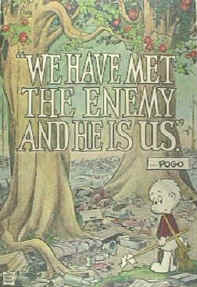Over the past two weeks I have observed the sun and the moon in the sky together on three or four different afternoons. It isn’t uncommon to see the moon during the day, but on these recent occasions I happened to notice something I never noticed before. Something was “wrong” with the picture. Can you see the anomaly in my drawing? Do you have a plausible explanation?

What’s wrong with this picture?
The typical human brain has a visual processing engine that automatically analyzes the relations between illuminated surfaces and shadows and intuitively computes the angle of illumination (direction(s) light would be coming from to produce these effects). Artists usually make light and shadowed areas congruent with logical or plausible sources of illumination, even if the those sources are not included within the picture.
So the scene above grabbed my attention very quickly and prompted me to look at the afternoon sky again for several days in a row. As the moon grew more full, the discrepancy between the lunar shading and the location of the sun became a little less obvious, but it was still bothersome.
Once the sun sets, leaving only the moon in the sky, the problem is also less obvious. But when they are both up there in the big, blue sky at the very same time, directly opposite each other in the same contiguous volume of clear, empty space, the cognitive dissonance created by the mismatch between the earth-sun-moon angle and the orientation of the shading on the moon is almost maddening.
Its just wrong.
What gives?
Poor Richard
[note: unfortunately I didn’t have a digital camera with which to document this anomaly, but my drawing is schematically very close to what I actually observed on several days this September. Ironically, one of the afternoons in question was on September 22, the date of this year’s International Observe the Moon Night! If you have any photos of this anomaly (showing sun and moon together along with lunar shading that seems inconsistent with the earth-sun-moon angle) or know of any such photos online, please leave a comment with pics or links.]
Related:
- Shading (Wikipedia)
- The 5 Angles of Illumination (pdf)
Images:




 Church of Reality
Church of Reality Critiques Of Libertarianism
Critiques Of Libertarianism P2P Foundation
P2P Foundation Stanford Encyclopedia of Philosophy
Stanford Encyclopedia of Philosophy The Stone
The Stone